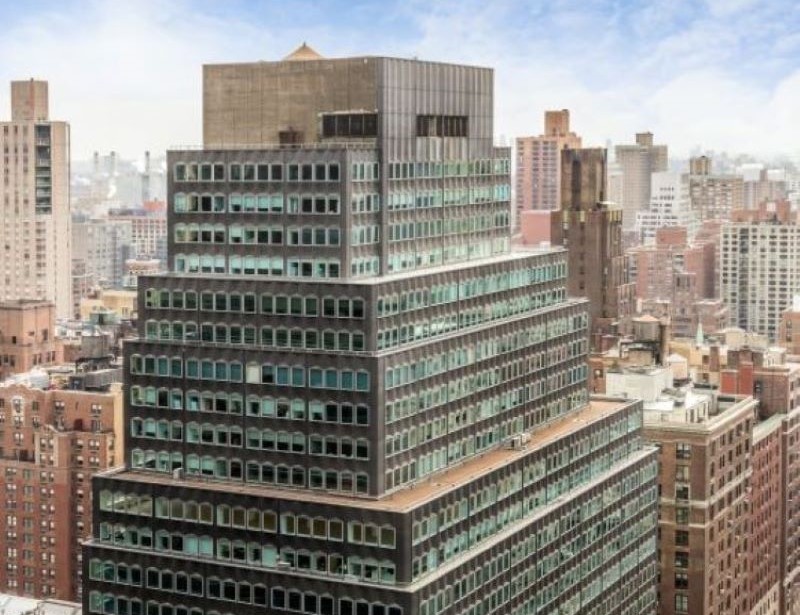Q&A: The Retail Experience of Digital Natives
A.T. Kearney's Michael Brown provided insight on how the new generation of consumers will impact the format of future shopping centers and why technology will be such a big part of the retail story.
By Evelyn Jozsa
The fate of traditional shopping centers is at a crossroads. Retail is undoubtedly undergoing a transformation and the question is how will this change impact the industry. Michael Brown, partner in A.T. Kearney’s consumer products and retail practice & author The Future of Shopping Centers report, discussed with Commercial Property Executive the new retail formats, what drives the change in the industry and how retail operators can embrace it.
In the report, you describe the shopping malls of the future as consumer engagement spaces. What are the key characteristics of these retail centers?
Michael Brown: Our idea is that Consumer Experience Spaces (CESs) will come in a variety of formats. That’s really the first big idea given that, historically, the retail real estate business has taken a fairly cookie-cutter approach to commercial development. Of course, there were variations on the theme—not all strip malls looked alike, but most were similar. Also, not all malls looked alike, but, with the exception of properties such as The Mall of America, most were similar. The real breakthrough has been incremental: the development of outlet malls, vertical malls and open-air malls as alternatives to enclosed shopping centers.
Could you describe some of the different formats these new centers may take?
Brown: As described in our report, the major formats will include, but are not limited to: innovation centers (defined as “smart” spaces where pooled tenant data is used to create targeted offerings), destination centers (featuring large spaces centered around a large attraction, usually arranged around entertainment), values centers (spaces that draw their identity and tenants on the basis of appealing to a set of shared values) and “retaildential” spaces (mixed-use “lifestyle centers” that target specific demographics and combine housing with commercial and lifestyle/life stage offerings).
What are the main factors that drive this change in retail?
Brown: This is a very complex question. The full answer could fill volumes, so we’ll focus on some. First, America is, and has been, chronically over-stored and over-malled. Second, the competition for online retailers. Third, social media and networks, but also the fact that the consumer has moved to the center of the value chain. Then there’s the aging of traditional Baby Boomer customers and the rise of generations such as the Millennials and Gen Z. It’s a “perfect storm.”
What are the main challenges that retail operators will face during this adaptation period?
Brown: Historically, retail real estate survived or failed on the basis of several predictable factors: site selection, financing, regulation, the ability to attract the right anchor tenant and surrounding it with other tenants, having sufficient parking etc. All pretty cut and dry. Get the basics right, stay ahead of population movement trends and one could be fairly successful. However, demographic, cultural and technological change has made breaking even—let alone enjoying sustainable growth—far more difficult.
Again, we could fill a book with these challenges, but we’ll highlight just a few. To begin with, there is an increasing pressure on all sides from digital retailers and service providers. Another challenge includes the consumer-controlled technologies that allow shoppers to disintermediate physical retailers altogether. Also, there are changes in the mechanics of shopping, such as voice activation and smart AI agents (Siri, Alexa etc.), “dash” buttons, bots, subscription services, interactivity, social networks, instant peer-to-peer review (Amazon.com’s Echo Look) and big data analytics.
Retail operators must also “unlearn” the lessons of the past that led to success and learn new models built around the demands of an engaged and radically changing consumer base. Finally, it is important to find ways to connect, understand and cater to new lifestyles.
How are demographic and behavioral shifts impacting the future of retail?
Brown: We’ve already hinted at this a bit above. The main changes will be the emergence of Gen Z and the waning in importance of Baby Boomers. Let’s look at Boomers first. They are the generation that in many ways enabled the growth of the modern American mall. They shared largely—but not exclusively—common values or at least enough of them to make mass marketing through more or less cookie-cutter approaches to retail. These were not just viable, but immensely profitable over time.
The problem is, they were never really a mass market. They just tended to function like one in the absence of more customized alternatives. They purchased things they never needed such as home furnishing, appliances, consumer electronics and even clothing. Now, they are downsizing, so not only have they stopped what had been lifetimes of near continuous, conspicuous consumption of material goods, but they are also getting rid of the things they have with one salient exception, their savings.
What about the new generation of consumers?
Brown: Boomers are being replaced by Gen Z and late Millennials in terms of being drivers of the consumer market. These new shoppers are significantly different from preceding consumer cohorts in several respects. They are diverse—ethnically, racially, in terms of gender orientation etc.—and proud of it. They are more technologically sophisticated than Boomers, X-ers or early Millennials and often more sophisticated than retailers and mall operators. They are more likely to comfortably relate to the world through a screen rather than in person.
Additionally, they demand the right to co-design and customize retail offering whenever and however possible. This new generation is hyperconscious of perceived slights or disrespect. They also care more about the values associated with offerings than the traditional (item/price) value they may or may not represent, place a higher value in utility than ownership and much, much more.
In the report, it is estimated that by 2030, 40 percent of the consumers will be digital natives. What will be the role of technology in the retail experience of the future?
Brown: Again, we’ve touched on this several times, but we think it is safe to say that where previous generations were a bit in awe of technology, seeing it as something almost alien or foreign to real life. For digital natives, technology is real life or at least the most important part of much of their lives. What earlier generations saw as almost magical breakthroughs, digital natives will see as utilities and “wallpaper”—the installed fabric of the world. Screen and voice interfaces, for example, will be as natural to them as telephones and magazines were to Boomers.
That’s from the consumer side. There will be dozens of connective technologies bridging the shopper and the retailer. These will include bots and AI, virtual and augmented reality devices, haptics and other smart, wearable or implanted technologies, some variation of what we currently think of as the Internet of Things and a raft of communication platforms.
What about the retailer’s side?
Brown: Finally, on the retailer, mall operator or manufacturer’s side, there will be a whole set of additional technologies. Some of these will be devoted to making the “functions” of shopping—ordering, processing, inventory management, delivery, billing, returns etc.—more and more seamless and efficient. A second set will be directed against consumers themselves. These will involve Big Data collection and analytics, the development of creative algorithms, non-intrusive, multi-sourcing behavioral monitoring, social media analytics customization and personalization, and connectivity.
Combined, these technologies will represent a significant break from past retail analytics, where, traditionally, retailers practiced forecasting by looking at historical shopping data and then projecting it forward in time. These new systems will be designed to anticipate consumer needs that, in many cases, may never have been manifested before. This move from historical forecasting to what, in many cases may be, asymmetric anticipatory systems will represent the most profound change in retailing witnessed over the past two millennia.
Image courtesy of A.T. Kearney








You must be logged in to post a comment.